Buddha’s Orphans
The article Buddha's Orphans has been adjudged the best entry at the 2014 International Committee for the Red Cross and Press Institute of India award for humanitarian reporting
 Sohini Chattopadhyay
Sohini Chattopadhyay
 Sohini Chattopadhyay
|
27 Feb, 2014
Sohini Chattopadhyay
|
27 Feb, 2014
/wp-content/uploads/2015/11/Sohini-final.jpg)
The article Buddha's Orphans has been adjudged the best entry at the 2014 International Committee for the Red Cross and Press Institute of India award for humanitarian reporting
On a boggy, fermented scrap of land by the dregs of the diseased Yamuna, a group of men stand in a circle and play. The ball looks like it is made of bamboo, a lamp-shade like thing with shapely cracks. They are playing a version of Sepak Takraw, a sport popular back home in Myanmar, a kind of volleyball but played only with the legs and head. The men are a ragamuffin band— some dressed in cheap tracksuits, some in lungis, some in baggy, hip-hop shorts. But they play sharp and quick, with lightness and laughter and loose-limbed grace. They bring a handsomeness to their rank surroundings, this scab-like pocket of the city where they live in frail, flappy hutments. They make it, almost, a place of beauty.
They are the Rohingya of Myanmar. It has not been easy finding them here. Rohingya refugees? The peanut toffee sellers on the rutted stretch of road leading to their camp look puzzled, the people at a kabaadi (recycling) compound shrug, before a chaiwalla finally points the way. They have been here 19 months, yet no one seems to know who they are. Or perhaps, they do not care to know.
It could be a metaphor for the Rohingya narrative. Myanmar, a Buddhist majority state, does not recognise the Rohingya—who number around 800,000, says the United Nations High Commission for Refugees—as its citizens and refers to them as ‘Bengalis’. Bangladesh does not accept them as its own. The Indian Government’s policy on them is unclear. The Ministry of Home Affairs says that it is aware of the Rohingya trickling into India, but it does not recognise them as refugees or asylum seekers.
Since June 2012, more than 145,000 people, most of them Rohingya, have been displaced within Myanmar as a result of the horrific violence that has unfolded chiefly in Rakhine state in Myanmar. Human Rights Watch has labelled this a state-aided campaign of ethnic cleansing directed against the Rohingya. Matthew Smith, executive director of the human rights organisation Fortify Rights, who has been touring Myanmar through February for research, says more than 100,000 Rohingya may have fled Myanmar, chiefly for Bangladesh, Thailand and Malaysia.
About 8,900 Rohingya, by the UNHCR India office’s count in February, have also made their way to India over the past months. Social worker Ubais Sainulabdeen, who is working with the Rohingya here, puts this number at 15,000. Hostilities have flared again of late—the BBC reported 40 people killed in Rakhine state last month. The CPM was planning to raise a question about the Rohingya in the last session of Parliament before the General Election. “I visited the Rohingya refugees in Delhi in December, when it was freezing. This is a pressing matter, but unfortunately because of the Telangana upheaval, it will have to wait for the next Parliament,” says A Sampath, the CPM’s Attingal MP.
For some reason, 55-year-old Abul Hashim cannot stop thinking about his fishing equipment. What a strange thing, to leave behind the things accumulated over a lifetime—the home, the rooms-full of conversation, his friends, and to think only of the fishing equipment. A one-time resident of Maungdaw district in Myanmar, he arrived in Delhi three weeks ago. For 25 days, there had been fighting and arson in his village. Half his friends and relatives were dead, or gone, or missing. Everyday people were planning to leave by boat, in the dead of the night. So Hashim decided to leave too.
It was 2 am when Hashim, his wife and their four children crept out of home to catch their boat to Bangladesh. The cops are less alert at night; all day, they patrol the villages, “taking what they want, our plump chickens, our potatoes, bags of rice,” says his volunteer interpreter.
The boat Hashim took was crammed with refugees, perhaps many of them his neighbours and relatives. But he didn’t have the heart to look at their faces; instead, he remembers how dark the water was. He was in Bangladesh for about a week, where he arranged for his wife and four children to live in a Rohingya settlement; his aunt is also there. He came to India by car with the help of a ‘dalaal’ (broker).
His brother, Mohammad Hashim, has been in India for several years and lives in a slum next to the Kalindi Kunj camp in a two-room hovel. He runs a small business, selling prayer caps. “ [Abul Hashim] is the eldest of my brothers, the roof above our heads, [as it were]. After several years apart, we are finally together,” says the younger Hashim, who came away four years ago.
And yet, Abul Hashim’s wife and children are still in Bangladesh; this is reunion by instalments. He has acquired a cellphone, and been calling his wife and children every day. As we speak, his phone rings. He takes it out, a new phone with its stiff plastic screen sticker intact, and speaks eagerly, then looks puzzled. He hands the phone to one of the camp dwellers, who listens for a second before laughing and telling the others.
It is a call from the service provider. “At least someone is interested in us,” a kind interpreter explains amid some mirth.
Mohammad Issaq, 27, ran away from home in Myanmar’s Buthidaung district the same day he came away from the hospital. He had been there for eight days, and the bill had come to ‘1 lakh’ in Burmese currency; he insisted he had to leave before the bill became any bigger. He had been beaten up brutally by the security forces for not reporting to work. Six months since, he shows swollen knob-like clots on his hand, and marks on his knees and shins.
He made up his mind to leave after leaving hospital. An agent said he could organise passage to Bangladesh that night. Issaq didn’t tell his parents he was leaving. “They would have cried, and I would have cried, and then I wouldn’t have been able to leave. I wanted to go while I was able-bodied,” Issaq says through the interpreter. He has been in Delhi three months; he spent three months working in Bangladesh. His Hindi is not fluent, but he follows it well and doesn’t wait for questions to be translated.
There is little room in the camp, so Issaq sleeps at night with another refugee who runs a store on the premises. He works as a labourer at construction sites nearby. He has seldom been paid on time, or his actual dues. “They know we are not from here, so they keep us hanging,” he says. “But I have to save up money for Saudiya,” says Issaq. He is a quiet, serious young man, who keeps mostly to himself. He smiles at noisy games, and nods at conversations from the sidelines.
“First, we have to get you a wife,” says Mohammad Haroun, one of the refugees who has been in India for several years. Issaq grins and murmurs this can wait till he gets to ‘Saudiya’. “You need to get a passport for that, you don’t need a passport or permit to get married here [unlike in Myanmar, where the Rohingya need an official sanction to marry]. So many have got married at this camp,” says Haroun bhai. “A wife can make a home of a store-room, dil basa degi (give your restless heart a place to roost). A couple of girls, in fact, have been asking after you,” he grins at Issaq. It makes him chuckle, this quiet, solemn young man who is shy of speaking in his own interview.
Mohammad Abdullah, 21, has been dreaming of a football match back home: after the match, which his side wins of course, they walk back home in Maungdaw district, and come across a large fish in a stream. Then, his wife woke him, and he cried for an hour. Despite this, Abdullah is a cheerful young man, who can’t help break into a grin every minute or so. “I have done an India darshan after I arrived,” he says, “I have been to Jammu, Punjab, Bengal, Bihar and Kerala. I have never travelled so much before. In Myanmar, we had to take a permit to travel outside our village.”
Abdullah came away 11 months ago. He was working for a politician in his district, Zakir Ahmed of the Union Solidarity and Development Party who was elected to the lower house in 2010. “Our MP was working very hard for us, me and some boys used to travel with him,” says Abdullah.
When the violence began in June 2012, Abdullah’s village was among the first to be affected. Gangs of men would drag women away. Houses would be burnt. Certain men were singled out for attack. “We stopped sleeping at night, so we could be alert to sounds of danger. My family worried for me because of my political associations. I didn’t want to go, but Zakir Ahmed advised me to leave. I asked my brother to give me a gift for sending me away. He gave me the money with which I travelled in India,” he chuckles.
He runs a small business selling fish here. Two months ago, he married a girl he met in Jammu. One day, she drew flowers on his left arm with mehendi. He laughs when you ask him about it: “I must have been dreaming about football, and my friends, and the fish we caught in the village. When I dream like that, I never want to wake up.”
BUDDHIST MAJORITARIANISM
The Rohingya crisis is the second instance of a Buddhist-majority state targeting a minority in south Asia in recent years. The first is Sri Lanka, where the ethnic Tamil population (18 per cent of the population) was targeted in the war to wipe out the terror outfit, the Liberation Tigers of Tamil Eelam. A report by a UN panel of experts suggests 40,000 civilians were killed in the final phases of the conflict in the Vanni region of Sri Lanka between August 2008 and May 2009. Another UN report published in 2012 suggests 70,000 civilians have not been accounted for, implying that civilian casualties could be far higher.
In Myanmar, a Human Rights Watch report by Smith calls the violence against the Rohingya a ‘campaign of ethnic cleansing’ and writes of a ‘a Burmese government policy of deportations… that appear aimed at permanently removing Rohingya and other Muslims’.
It is not only the State that is culpable. There is also the rise of Buddhist nationalism and a militant monk-led movement in Myanmar. (According to the CIA’s Factbook, 89 per cent of Myanmar’s population is Buddhist.) A prominent monk with extreme views is Ashin Wirathu, whose severe visage was identified as ‘The Face of Buddhist Terror’ on the cover of Time magazine last June. “You can be full of kindness and love, but you cannot sleep next to a mad dog,” Wirathu is quoted as saying in a New York Times story dated 20 June 2013.
“A frightening number of people I met agree with Wirathu… it’s crazy,” says M Kim, a founding member of the Burma Centre in Delhi and a Chin Christian refugee from Myanmar since 1998. He goes back to his country once a year; in the past two trips, he has seen and heard support for Wirathu among taxi drivers, people on the street, even some of his childhood friends. “Buddhists are a peace-loving people. I had and still have so many Buddhist friends in Burma. It is the government that followed a policy of Burmanisation and restricted minority access to government positions, but there was no culture of religious leaders promoting prejudice.”
Kim himself is not a supporter of the Rohingya, and declines comment on their situation (“It’s a sensitive issue”), but he doesn’t agree with the spiteful anti- Muslim sentiment propagated by Wirathu. “In 2007, the monks were marching peacefully, and so bravely, against the junta. It was a political agitation; there was no religious subtext. Their protest turned the spotlight back on Myanmar, which forced the junta to move towards democracy again. The new militant monks have the government’s support. In fact, considering elections are in 2015, perhaps this is a very strategic move by the government.”
“I was in Sittwe [in 2012] when local monks wrote their first pamphlet urging the Buddhist population to completely isolate the Muslim community,” says Smith over a Skype call. “The author explained to me his existential fears of a Muslim takeover—fears that have been fuelled by state security forces and state- run media. Since then, [Fortify Rights] has documented numerous other pamphlets circulating throughout Arakan state, calling for the isolation and expulsion of Muslims. Local communities explain plainly why they want all Muslims removed from what they regard as their homeland. They feel as though they are fighting a battle to save their culture and religion, and human rights are no part of the equation.”
In Sri Lanka too, the hardening of attitudes among monks is visible. The BBC, among others, has reported the rise of the Bodu Bala Sena, a hardline order of Buddhist monks who are unashamed of their bald dislike for the country’s Muslims. The report notes that the Sena has asked citizens not to rent out property to Muslims.
“This is the classic majority-with-a-minority complex; [BBS monks] speak only of how to protect Buddhism in Sri Lanka,” says Samanth Subramanian, a journalist and writer who is working on a book on Sri Lanka. “They genuinely seem to fear that other religions will swamp Buddhism, and that Sri Lanka is Buddhism’s ultimate haven. So any measures at all are permissible in the safeguarding of the faith, even violence.” There are others apart from the BBS—the Jathika Hela Urumaya, which is the parent party of the BBS formed in the 2000s, and the Sinhala Rawaya, adds Subramanian.
Compare this with the image most Indians have of Buddhism: the Dalai Lama and the brave people of Tibet, Herman Hesse’s always bestselling Siddhartha, the story of the brutal king Asoka and the peace he found in the Buddha’s teachings, the calming hum of Buddhist chants, the religion that gave Ambedkar’s Dalits dignity. People also recall the Buddha statues of Bamiyan in Afghanistan that were blasted to bits by Islamist extremists in 2001.
THE SILENCE OF DAW SUU KYI
In 1991, when Aung San Suu Kyi was awarded the Nobel Peace Prize, she received the honour in absentia. The presentation speech read out on the occasion commended her vision: “She unites deep commitment and tenacity with a vision in which the end and the means form a single unit. Its most important elements are: democracy, respect for human rights, reconciliation between groups, non-violence, and personal and collective discipline.” In all, the speech had ten mentions of human rights.
So far, Suu Kyi has said nothing about the Rohingya, nothing about the violations of their human rights. In a much- criticised interview to the BBC in October 2013, she denied the Rohingya are being subjected to ethnic cleansing. “I think the problem is due to the fear felt by both sides,” she said. In 2012, on a visit to India days after a particularly brutal October in Rakhine, she was asked about the violence by NDTV in an interview. She condemned it, but made no mention of the Rohingya. “Don’t forget that violence has been committed by both sides,” she said, “This is why I prefer not to take sides.”
AN OLD ANGER
The Rohingya have been subjected to systematic persecution for several years in Myanmar. It began at the beginning in 1948 when Burma assumed its modern statehood; the Rohingya were not recognised as one of the country’s national groups. In 1978, the ruling junta drove out 250,000 Rohingya through a campaign of arson and rape and murder (similar violence in 1991 had similar results). In 1982, a new citizenship law denied them citizenship. This means they do not have passports or other regular documents. They are issued special ID cards that restrict their right to free movement within Myanmar; they must furnish these to seek permission to travel from one village to another. “We can’t travel outside our villages for more than three days,” says Mohammad Haroun.
Many of them speak of the airy, cool homes they left behind, the large, open fields. Here, they live in humiliating conditions; the camp does not have even a makeshift toilet. But they can marry without asking, play long, raucous games without censure, travel at will, have all the children they want. This, too, is becoming something like home, it holds the heart in different ways.
The UNHCR office in India has registered 4,000 Rohingya refugees and asylum seekers; 2,900 applications are under assessment. Cards apart, the sum of the UNHCR’s assistance to these refugees amounts to a few bars of soap, 50 blankets that were handed out in Delhi’s vengeful winter, and women’s kits comprising underwear, sanitary napkins and toiletries. “You know the way UN people talk? Whenever I speak to them, I get the feeling that they will build me a five-storey house right away. But they don’t even give us the monthly allowance of Rs 3,000 that Afghan and Somali refugees are getting,” says Haroun bhai. “The cards are useful, the police don’t trouble us.”
How do you like the word ‘refugee’, I ask one evening, addressing a group of four or five watching a game of ball. There is a few seconds’ silence. “I like it,” says Abdullah. “We don’t have passports. We don’t have a country. It gives me an identity, a place in the world.”
Note: This article was modified after it was published
About The Author
CURRENT ISSUE
MOst Popular
3

/wp-content/uploads/2025/07/Cover_Crashcause.jpg)



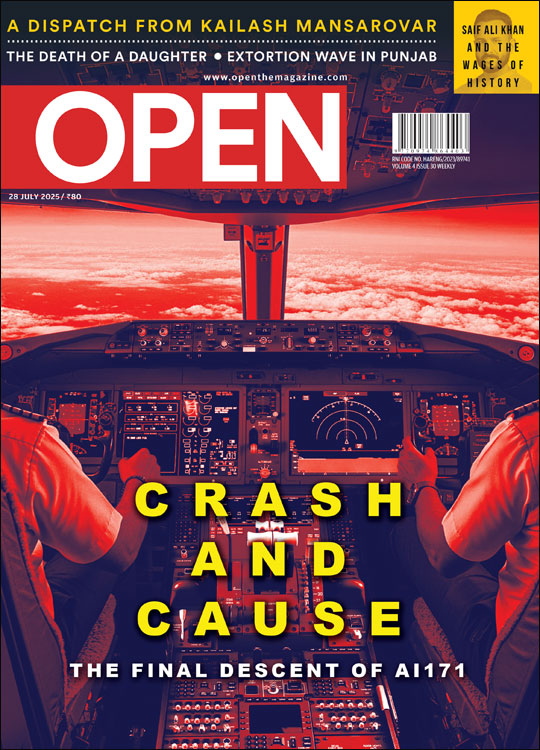
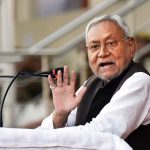
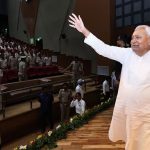

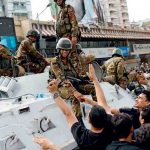
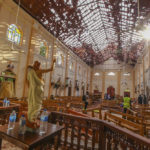


More Columns
Bihar: On the Road to Progress Open Avenues
The Bihar Model: Balancing Governance, Growth and Inclusion Open Avenues
Caution: Contents May Be Delicious V Shoba